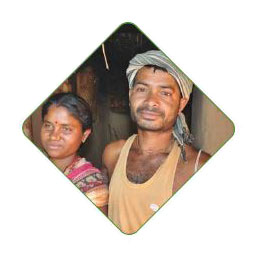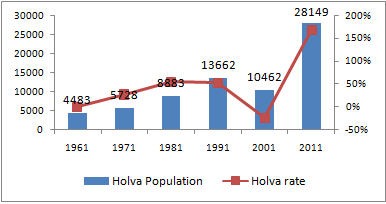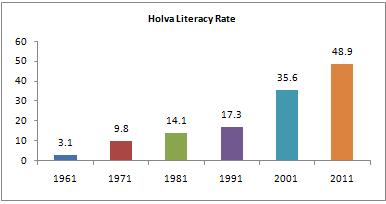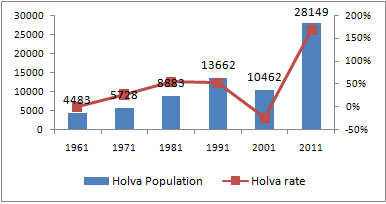A scheduled tribe of Odisha.

Location : Malkangiri, Nowrangapur, Koraput, Kalahandi
Language : Halbi, Bhatri (Indo-Aryan)
Major Occupation : Forest collection, Wage & Agricultural Labour
Socio-cultural Features
The name ‘Holva’ is derived from the word holo, meaning ‘plough’. The tribe has several local divisions, such as Bastaria, Chhatisgarhia and Marethia. In Odisha, the Holva claim to belong to the Bastaria division. These Bastaria Holva form a separate sub-caste and do not have any relationship with the other divisions. They have several exogamous clans (barga), viz. Manjur, Nags, Bag, Netam, Kochim, Honu, Goria pakhi, Bhardwaj pakhi etc. The family is nuclear, patrilocal and patrilineal. They practise monogamy and prefer marriage by negotiation. They also practise cross-cousin marriage, marriage by service, exchange and by capture. Their society allows junior levirate and remarriage of widows, widowers and divorcees. They cremate the dead and observe death pollution for eleven days. They worship their own gods and goddesses such as Dulhadeo, Budhadeo, Kankalin mata, Sitala mata, Bhaisasur, Baghrampat, etc. They have also incorporated some Hindu deities like Siva, Laxmi, Kali, Ram, Hanuman, Ganesh and Durga into their pantheon. Their sacred specialists designated as Pujari and Dabari conduct worships and perform rituals. The Holva live in multi-ethnic villages in separate hamlets. Their houses are arranged in a linear pattern. The shrine of the village guardian deity is found at the village entrance. Their houses are multi-roomed with wide verandah in front. They have their traditional leaders called Naik, Pujari and Barik at the village level and Jati nayak having jurisdiction over a number of villages to deal with their customary affairs.


